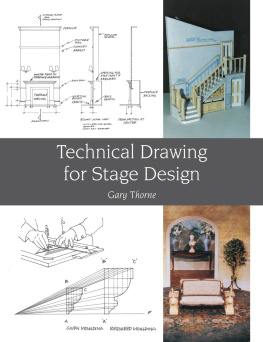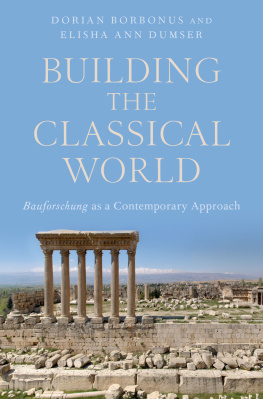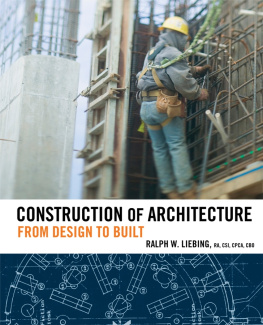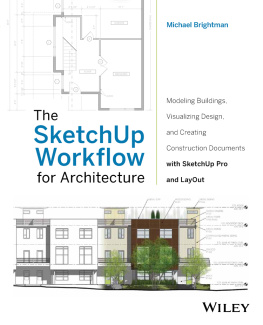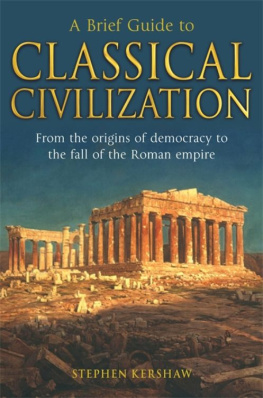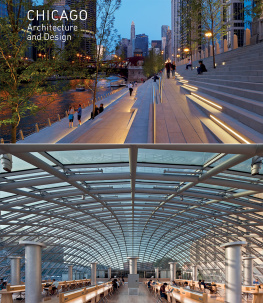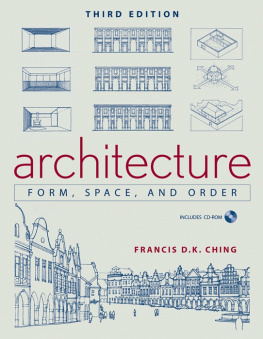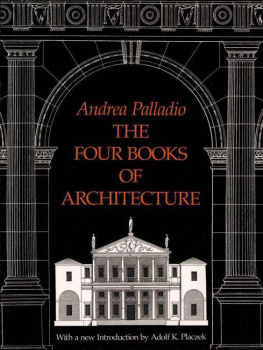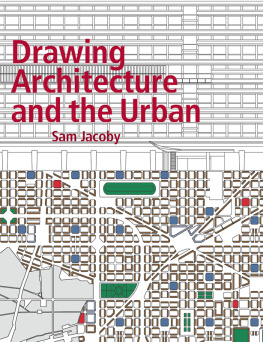This book examines the importance of Greek building and thought for the creation of architecture as Vitruvius understood it in a Roman context. In focusing on the central role of Greek practices of scale drawing and linear perspective, it considers the influence that Roman architecture drew on from Greek architects and concepts of craftsmanship. More than this, however, I explore the impact of the instruments and techniques of Greek architects on the classical understanding of the forms and mechanisms of nature and how the eye perceives them. Rather than demonstrating how classical architecture merely reflects the features of its larger cultural context, I try to show how the practices of Greek architects actively determined concepts about the world. In addition to classicists and historians of art and architecture, therefore, this book addresses readers interested in the history of philosophy and science, as well as architects who draw inspiration from the classical world.
In acknowledging only a small share of those directly involved with the realization of this work, I want to first thank my mentor, Fikret K. Yegl, who, in addition to training me in ancient art and architecture, read this book's manuscript in its entirety. His expertise allowed for the comments, criticisms, and insights necessary to elevate it above the artlessness of its first draft. Credit for the merits of this project must go to Beatrice Rehl, Publishing Director of Humanities and Social Sciences at Cambridge University Press. Beatrice's editorial assistant, Amanda Smith, provided invaluable help in the realization of this book. My wife, Megan Finn Senseney, read and edited later drafts of the manuscript, enhancing it with her gift for language and her command of sources as a real information scientist. I would also like to express gratitude to the particularly thoughtful anonymous reviewers of my manuscript, who provided encouragement and much needed perspectives on both details and larger issues. Architects Sarang Gokhale and Erin Haglund offered excellent assistance with my line drawings that illustrate many of the arguments of this book.
At various stages, the ideas of this book benefited from conversations with several classicists and historians of art and architecture. James and Christina Dengate were always generous with their enthusiasm, feedback, and sharing of sources. Diane Favro challenged my ideas with incisive questions. Erich Gruen took the time to meet with me and offer his ideas on the Hellenistic and Roman historical contexts of my research on ancient architecture. Richard Mohr offered invaluable feedback on my interest in Plato. Robin Rhodes generously discussed the details of my research and invited me to join his panel exploring the subject of scale in Greek architecture. David Sansone gave important feedback on my interest in Aristophanes. Phil Sapirstein provided enlightening thoughts and questions about the technology of building and design, particularly in the Archaic period. Both in person and via email, Andrew Stewart asked me penetrating questions about my developing research in Greek architectural drawing, which resulted in several of the paths I later took in this book. Phil Stinson gave me his thoughts and encouragement on a variety of topics. I have also benefited from my colleagues researching the topic of historical architectural drawing in later periods, including Robert Bork, Anthony Gerbino, Raffaela Fabbiani Giannetto, Ann Huppert, and Heather Hyde Minor. In addition to Heather Hyde Minor, this study simply would not have been possible without the incredible support of my colleagues Dianne Harris and Areli Marina. Finally, the ideas and approaches in the book build on a foundation in art history shaped by my amazing teachers, C. Edson Armi and Larry Ayres. Any mistakes of fact or questionable interpretations in the final work result from my own divergence from the helpful suggestions of these excellent scholars.
Concepts also developed from the help of several friends and family members, including Jonathan Banks, Brent Capriotti, Heidi Capriotti, Barbara Cohen, Lawrence Hamlin, Dan Korman, Geza Kotha, Paolo Maddaloni, Rick Mercatoris, Madhu Parthasarathy, Donna Senseney, Megan Finn Senseney, Debbie Senseney-Kotha, Kevin Serra, Leonore Smith, Smitha Vishveshwara, and many others.


